Vibrators and brass cutlery: Indigo ain’t ya mama’s bookstore anymore
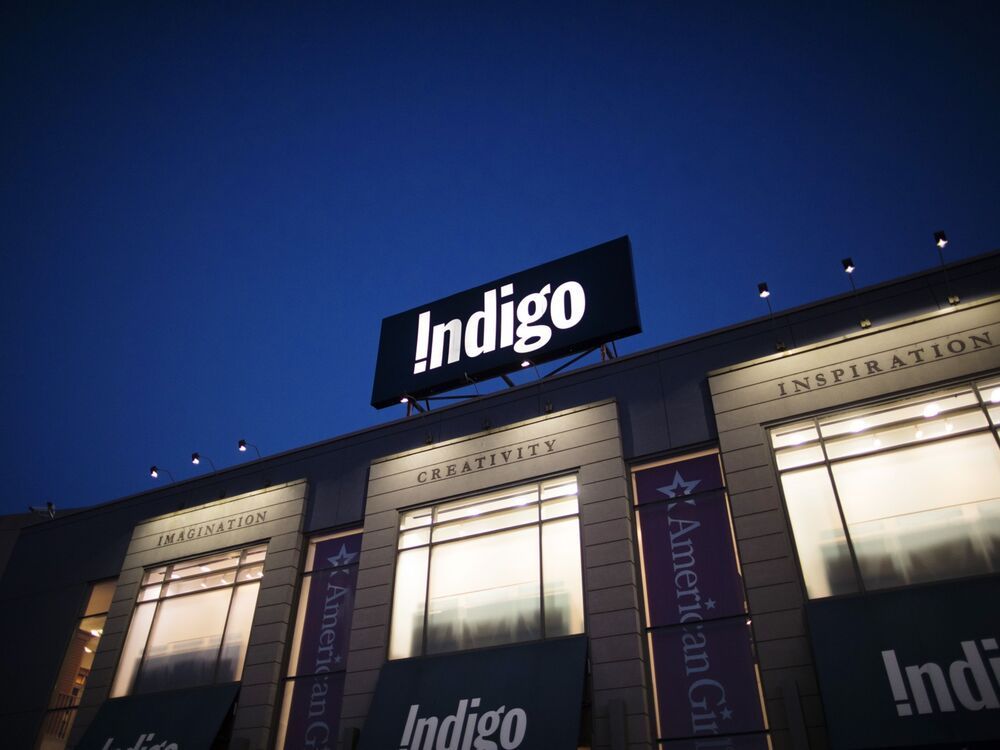
‘It’s a whole revolution around almost everything we do, whilst not losing the magic dust’
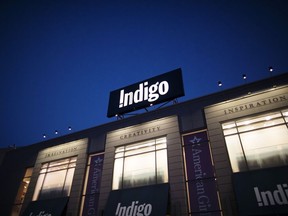
Article content
Type “sex” in the search bar on Indigo Books & Music Inc.’s website and the first thing the algorithm tries to get you to buy is a copy of Come as You Are, a popular book by psychologist Emily Nagoski that uses scientific research to debunk misconceptions about doing the deed.
Advertisement 2
Story continues below
Article content
A link to the Kama Sutra appears high on the list of options. Scroll further and you’ll find tools that can put that reading list to work: about half way down the page, you’re presented with a series of soft-toned vibrators that are über minimalist.
It’s starkly different from what someone would expect from Indigo Books & Music Inc. just 10 or 15 years ago, when anyone who occasionally visited a Canadian mall would have been familiar with Indigo’s Chapters brand, which put books at the forefront.
“It’s a whole revolution around almost everything we do, whilst not losing the magic dust,” president Peter Ruis said from the company’s Toronto headquarters in mid-July.
Indigo’s board of directors, led by founder and CEO Heather Reisman, hired Ruis in February last year to transform Indigo’s business model. With more than 30 years in retail, the industry veteran, who hails from Britain, helped revamp companies such as Urban Outfitters Inc.’s Anthropologie and U.K. luxury department store John Lewis Plc.
Advertisement 3
Story continues below
Article content
Ruis insists the “magic dust” remains books, even though it’s getting difficult to call Indigo a bookstore. He said the drift from books is intentional, and key to the company’s survival in the age of online marketplaces, audiobooks and e-readers.
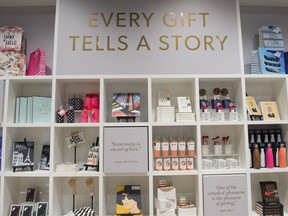
Over the past decade, the company’s growth ebbed and flowed as the book-selling game transformed. Readers swapped hardcovers and paperbacks for digital versions that took up just a few megabytes of space on their devices.
Amazon.com Inc. already had its own e-reader, the Kindle, supplementing its ability to sell far more physical books than anyone else due to the inherent lower costs of selling online. Looking at the websites now, Amazon lists more than 80,000 paperbacks for sale, while Indigo’s website offers about 1,000 titles.
Advertisement 4
Story continues below
Article content
Indigo struggled for relevancy. Its revenue began consistently declining, dropping to $867.7 million in 2014 from $941.5 million in 2011.
No longer could the company be a “one-trick pony,” Ruis said. The era of a retailer selling just one category of items was over.
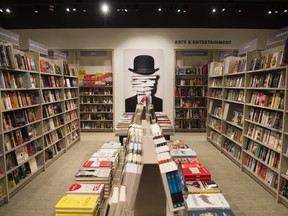
Reisman founded Indigo in 1996. Back then, books and music were core to the business. That remained true even after the company merged with its main rival, Chapters Inc., in 2001. A bibliophile could wander into a store and pick up the latest Stephen King novel and toss the newest Sum 41 CD in their basket on the way to checkout.
Throughout the aughts, the company started growing its non-book merchandise offerings, throwing up shelves of notebooks, racks for kitschy items, and stands for gifts and children’s toys.
Advertisement 5
Story continues below
Article content
Around 2014, Indigo leadership began playing with the idea of becoming Canada’s, and even the world’s, first cultural department store.
“Very simplistically, if we’re the biggest sellers of cookery books in Canada, why wouldn’t we choose an incredible, boutique offering of the best cookware to go with it? Not be a specialist, not for a thousand pots and pans, but find the best range of hand-sourced products that will go with (cookbooks),” Ruis said.
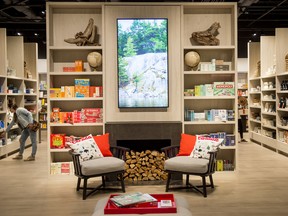
That thinking is what led to an almost complete shake-up of the Indigo with which Canadians grew familiar.
Gone are the tables at the front of a store crowded with books. In their place are tables that show off stoneware serving plates with brass cutlery certain to make any one who subscribes to the clean-girl aesthetic salivate. Racks are strewn about with “reading robes” and pajamas that invite coziness. And yep, Indigo has gua sha tools, CBD skincare products, and vibrators among a whole host of beauty and wellness products that would thrill the likes of Goop Inc. founder Gwenyth Paltrow.
Advertisement 6
Story continues below
Article content
And the books? Those are mostly deeper in store now with a few selected titles peppered amongst the curated general merchandise. Even venturing on to the website, novels are hardly present on the main page. Indigo locations now generally have a mix that’s 55 per cent books and 45 per cent merchandise, with newer stores maintaining a more even split, Ruis said.
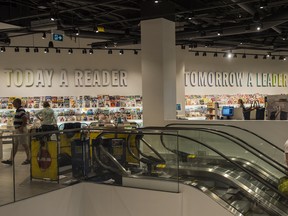
In the last few years, Indigo has even created its own proprietary brands. There’s Nota, the company’s line of notebooks; Oui, a line for homeware; and Love & Lore, its fashion brand — to name a few.
Ruis calls it the “modernizing” of Indigo. “All the great brands have to reset to the way the world is and COVID reset all of us,” he said.
The strategy had been working from 2015, when revenue resumed climbing, hitting more than $1 billion in 2017. But a slowdown in the retail sector sapped momentum, before the pandemic dealt an even heavier blow.
Advertisement 7
Story continues below
Article content
All the great brands have to reset to the way the world is and COVID reset all of us
Peter Ruis
In 2020, sales dropped below $1 billion, and the company operated at loss for the second consecutive year. Lockdowns heavily impacted its brick-and-mortar business. Revenue at its large-format stores dropped in 2020 and 2021, bringing in $655.8 million and $439.8 million, respectively, compared to their peak of $728.6 billion in 2018.
The company saw a bright spot in online sales during the pandemic, bringing in $370 million during the 2021 fiscal year, the most money it’s ever made from e-commerce.
For the latest fiscal year, online sales slowed down while brick-and-mortar sales picked up. Jammed supply chains, high fuel prices, and rising inflation present a rocky road ahead for the company as the economy heads into a period of slower growth, and possibly even recession.
Advertisement 8
Story continues below
Article content
-

Tim Hortons reaches proposed settlement in class action involving mobile app
-

Loblaw suspects food inflation crisis may have finally peaked
-

Food industry wants Ottawa to intervene as grocery code of conduct talks bog down
But Ruis isn’t busying his mind with what Governor Tiff Macklem is doing at the Bank of Canada to wrestle sky-high inflation and deliver a “soft landing.”
“Look, I’ve been in the business 30 years. Interest rates go up. Interest rates go down. Ports shut down. There’s issues all the time. We lived, we worked through the 2008 recession. We worked through COVID,” Ruis said. “So we’ve been through probably the hardest time that you could ever be in and we all survived. In our case, done quite well.”
Still, Ruis is focused on maintaining reasonable prices for customers across all price points. “We have lots of new, innovative things so they sort of demand the price they demand,” Ruis said. “We’ve been able to keep prices the same because we’ve added extra volume.”
Advertisement 9
Story continues below
Article content
We’ve been through probably the hardest time that you could ever be in and we all survived
Peter Ruis
He’s encouraged by the $280 billion in savings Canadians accumulated during the pandemic that could stimulate spending even as inflation consumes more disposable income. And even though customers can purchase a set of four champagne flutes for $55, they can also find a stoneware bowl for $8.
“We’re sort of quite good at coming through these times in terms of giving people a little bit of joy when they can’t afford to buy everything,” Ruis said. “(We’re) never forgetting we’re based in books, but we’re early days on all that general merchandise,… that wonderful, eclectic mix.”
• Email: [email protected] | Twitter: biancabharti
Advertisement
Story continues below








